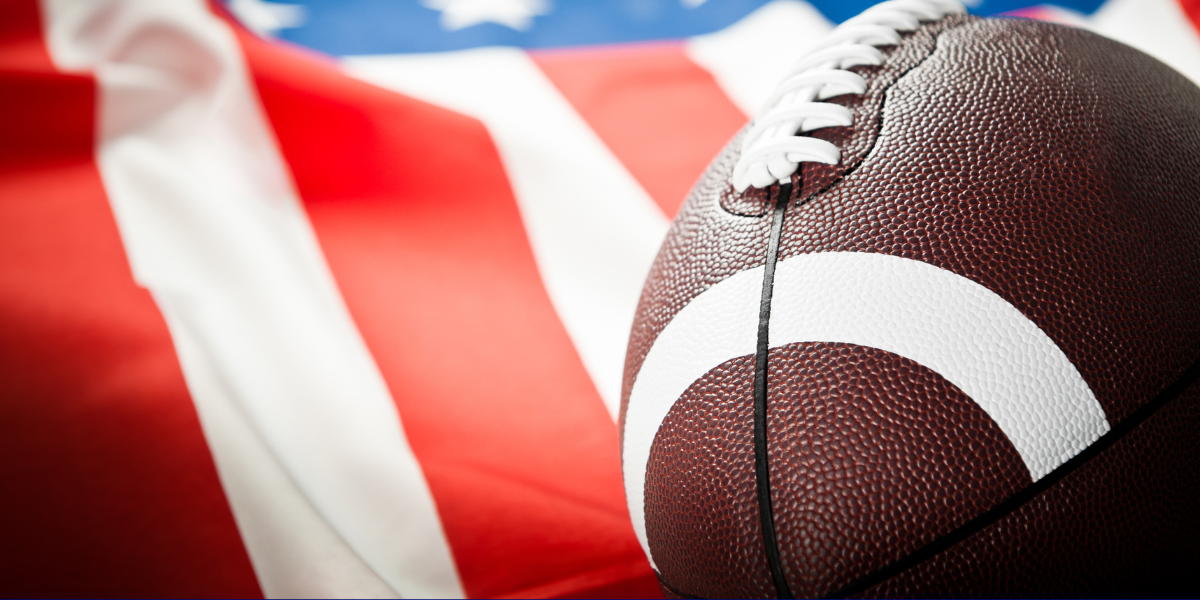It’s Game Time!
One of the most anticipated sports events is the Super Bowl. The National Football League has held this yearly game since 1967. Prior to that, it was called the AFL-NFL World Championship Game. At present, the Super Bowl takes place on the second Sunday in February.
Where Will Super Bowl LIX Take Place?
The biggest party in the NFL this year can be found in “The Big Easy”. The 2025 Super Bowl will take place at the Caesars Superdome in New Orleans, Louisiana. The Superdome first opened in 1975.
This will be the eighth Super Bowl played in the Superdome and the 11th in New Orleans, which puts New Orleans in a tie with Miami for the cities that have hosted the event the most.
Caesars Superdome is the home field of the New Orleans Saints of the NFL, the Bayou Classic, and the Sugar Bowl. It has also hosted other major events such as the NCAA men’s college basketball championships, Muhammad Ali’s last professional win, and WWE’s WrestleMania, which set the Superdome’s attendance record in 2018.
Creation Of the Superdome
Plans to build the Superdome were drawn up in 1967 after the then governor of Louisiana, John McKeithen, toured the Astrodome in Houston. McKeithen was quoted as saying, “I want one of these, only bigger.” Bonds for construction were passed just days after the NFL awarded New Orleans a professional football franchise.
The Superdome’s steel frame covers a 13-acre expanse; the area of the roof alone is 9.7 acres. The dome reaches 273 feet high with a diameter of 680 feet, making it the largest entirely steel-constructed arena, unobstructed by posts or columns, in the world. It took 20,000 tons of steel to create.
The Superdome was projected to cost $46 million ($365 million in today’s money) and be ready to open in time for the 1972 NFL season. However, due to political delays, inflation, and the 1973 oil crisis, the Superdome did not open until 1975 at a cost of $165 million ($1.3 billion in today’s money).
When the Superdome first opened, it hosted the NFL’s Saints, the Tulane Green Wave football team, and the NBA’s New Orleans Jazz. The Jazz left the Superdome in 1979 when the Jazz left for Salt Lake City. The Tulane football team left in 2014 when they returned to a new on-campus stadium.
Hurricane Katrina
The Superdome had been a hurricane shelter twice before Katrina, in 1998 for Hurricane Georges and again in 2004 for Hurricane Ivan. While the Superdome was built to withstand natural catastrophes, there had not been an engineering study to determine the amount of wind the structure could withstand. The day before Katrina hit, New Orleans Mayor Ray Nagin announced that the Superdome would be a public shelter. Originally, 10,000 people took shelter in the Superdome, but that number increased to around 30,000 as search and rescue teams brought in more people.
Early in the morning of the 29th, the Superdome lost power. The dome’s emergency generator was able to power internal lighting but little else. This means that the air conditioning, refrigeration system, and medical machines all failed. While this prompted a decision to move the medical patients to a different shelter, there weren’t enough resources to move them, so they stayed.
Later on the 29th, violent winds started ripping off parts of the roof. Two substantial holes, each about 15 by 5 feet, allowed rain to come into the Superdome. About 80% of the roof had been destroyed, but luckily, outside of the two repairable holes, most of the damage was done to the replaceable rubber membrane on the outer layer.
Things got worse for the Superdome on the 30th when the levees broke. The Superdome started filling with water, and though it remained confined to the field level, it caused a breakdown of the Superdome’s plumbing system. On September 2nd, 475 buses evacuated over 50,000 people from New Orleans shelters to Houston, San Antonio, and Dallas.
Superdome Revival and Renovations
Originally, it was estimated that it would cost $400 million to repair the dome post Katrina causing some to speculate that the Superdome would need to be torn down due to the damage, however, the eventual cost to repair was roughly $185 million, and was open in time for the Saints first home game in September of 2006. The Superdome’s multi-phase renovation after Hurricane Katrina cost over $250 million. The funds came from the National Football League, the State, and FEMA.
When The Saints Go Marching In
The Saints would win first game back in the Superdome after Hurricane Katrina. Now, there is even a statue of Steve Gleason’s punt block from that first game back in the Superdome.
Further renovations were done in 2009 and 2010 to replace the more than 400,000 square feet of aluminum siding as well as install an innovative barrier system for drainage.
In 2011, the Superdome added 26,000 LED lights in 288 fixtures. These lights draw only 10 kilowatts of electricity, and they are not expected to need to be replaced until 2057.
Vintage Meets Modern
New Orleans is now home to two major league pro sports teams, the NFL’s Saints and the Pelicans (formerly the Hornets) of the NBA.
The city’s turnaround and resilience were mirrored by the Saints’ fortunes on the field. The team faced many challenges from its inception in 1967 through the Katrina season of 2005. Miraculously, the Saints rode the fans’ incredible energy in 2006 to win their division and advance to the NFC Championship in Chicago. They finished the job after the 2009 campaign, winning the club’s first and only Super Bowl in 2010.
Given that the Superdome is a 50-year-old building, it is considered to be much harder to be a state-of-the-art venue compared to new arenas. However, the team is part of the Green Sports Alliance and has made significant investments, including a recycling program, a new LED lighting system, and a new aluminum skin that improved the building’s insulation.
Interestingly, when the Hornets became the New Orleans Pelicans, the Pelicans’ actual name was chosen because “it symbolized Louisiana’s most pressing need for coastal restoration and wildlife conservation.” The health and sustainability of the region’s wetlands, recovering from the devastation of Katrina and the BP oil spill in 2010, among other disasters, thus became a cornerstone of the Pelicans’ community relations platforms.
The Cost of the Halftime Show
Last year, more than $10 million was spent on the halftime show starring Usher at Super Bowl LVIII. Aside from the commercials and, of course, the football, halftime shows are also one of the most anticipated parts of the event. This is because they feature performances from bands and artists, as well as other grand preparations that surely give the impression of an all-out concert.
For a 12–15-minute segment in a national event, organizers of the Super Bowl spend about $1 million for every minute of the show. Breakdowns of expenditures involve paying for the extravagant stage setup, fireworks, lighting, and other necessities of the event. Notably, none of that figure is allocated for the halftime performer, who is paid on the union scale, which results in a $1,000 appearance fee. The artist who performs at the Super Bowl makes money with increased music sales.
This year’s halftime show will feature Kendrick Lamar. Kendrick Lamar is an American rapper, songwriter, and producer who is considered one of the most influential artists of his generation. The 37-year-old Lamar is from Compton, the heart of the Los Angeles rap scene, and has 17 Grammy wins. This will be his second Super Bowl halftime show appearance after his participation in Super Bowl LVI alongside Dr. Dre, Snoop Dogg, Mary J. Blige, and Eminem in 2022.
How much does it cost to advertise during the Super Bowl?
The Super Bowl is among the world’s most coveted televised events for advertisers given the huge audience, with a premium placed on creativity as Super Bowl commercials can generate outsized buzz. The price for placing commercials during the 2025 Super Bowl has not yet been reported, but for the 2024 game a 30-second spot on CBS cost around $7 million.
How many people watch the Super Bowl?
An estimated number of 40 million households and 124 million people will watch the Super Bowl worldwide. This is an increase over prior years. This includes watching the game through television, cellphones, and other devices that have access to the internet and live streaming of the Super Bowl.
This means televisions and devices consume about 38.5 million kilowatt hours of power. Moreover, there is an additional 37.5-million-kilowatt hours for lighting. This brings the total energy and electricity consumed to watch the Super Bowl to 76 GWh.
As for the cost of consuming this much energy, the average kilowatt hour price across the United States is about $0.17, which would result in a total combined bill of about $12,750,000 when it comes to just household energy consumption alone.
Have a thrilling Super Bowl weekend!






